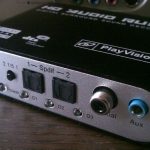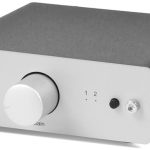A line output converter allows any car with a stock radio to run an aftermarket subwoofer and an aftermarket amplifier. For starters, a line output converter, or simply a LOC, helps to convert the high output signal that is sent to your speakers into a low output signal. The low output signal is then sent into the amplifier, which powers your subwoofer to produce bass.
Ideally, a line output converter is used to connect a stock radio to an amplifier that does not have preamp outputs. In such a case, the LOC act as a link between the radio and amplifier. The primary objective is to transmit signals from the stock radio to the amplifier by tapping into your speaker wires.
Installing line output converter to rear speakers
Note: Since car stereos are different, you may want to familiarize yourself with your specific car stereo wiring harness. Ensure to match the line output converter wires with your car’s wiring harness i.e., ground to grounds, right + to right +, etc. Also, ensure to use either rear or front speakers and not both. In our case, we’ll focus on installing a line output converter to the rear speakers.
For this installation, you’ll need
- Line output converter
- Wire stripper/cutter
- Electrical butt connectors
- Electrical tape
- Speaker wires
Step #1
The first thing you’ll need to do is to identify the wires running from the head unit or stock radio to your rear speakers (both left and right speakers). In most stereos, these wires can be accessed from behind the stock radio/head unit.
Step # 2
After you’ve positively identified the wires, strip about 1 inch of the insulating material from each wire leading to the left and right rear speakers. At this point, you can attach the left speaker to the left channel of the line output converter and do the same with the right channel. It is critical to keep the polarity of your wiring straight to make sure they will deliver the same kind of signal.
Step # 3
Using the electrical tape (you can also use the butt connectors) seal and firmly attach the speaker wires running from the LOC to your speakers together. Remember, all system wiring needs to be concealed to keep them out of the way and ensure that they interfere with your day-to-day operations.
Step # 4
Next, hook up the amplifier to the line output converter using an RCA cable. Ensure to secure the line output to the vehicle, preferably on the rear deck/ under the dash, to prevent the cables from moving as thrash your car up and down.
Step # 5
Once the LOC, you can now shift your focus to the amplifier and stereo settings. Turn on your stereo and set the volume to desired listening level to enjoy all the detail in your music. Check all the connections from the amplifier to LOC and speakers to ensure that the wiring is tight and secure.
Adjust the settings whenever necessary and ensure there is no distortion coming from the amplifier. In addition, ensure the turn-on wire, also known as remote wire, is in place. This wire is often blue and white, and it turns the amplifier on whenever the vehicle or stereo is turned on.
The Bottom Line
Basically, a line output converter taps into existing speaker wires, which helps convert high output signal into an acceptable level that can be utilized by an OEM amplifier. Installing a line output converter to rear speakers is not always a straightforward process, but it should be relatively easy if you follow the above steps. The most important thing is to familiarize yourself with specific LOC and stereo wiring before you proceed with the wiring. If you’re unsure or not comfortable doing the wiring, it is always a good idea to have a professional do it.
Michael Evanchuk is a San Francisco-based sound engineer with 20 years’ experience installing, troubleshooting, and repairing commercial, automotive, and household sound equipment. Evanchuk owns an auto stereo center, where he offers highly competitive car audio installation and repair services. He has written dozens of articles on different sound engineering topics, all of which have been published in leading journals, blogs, and websites.





